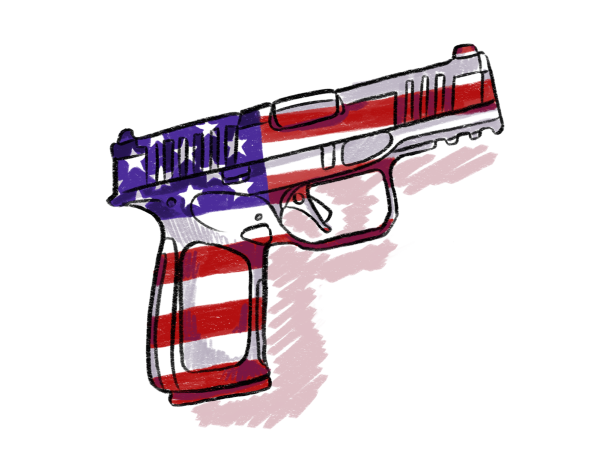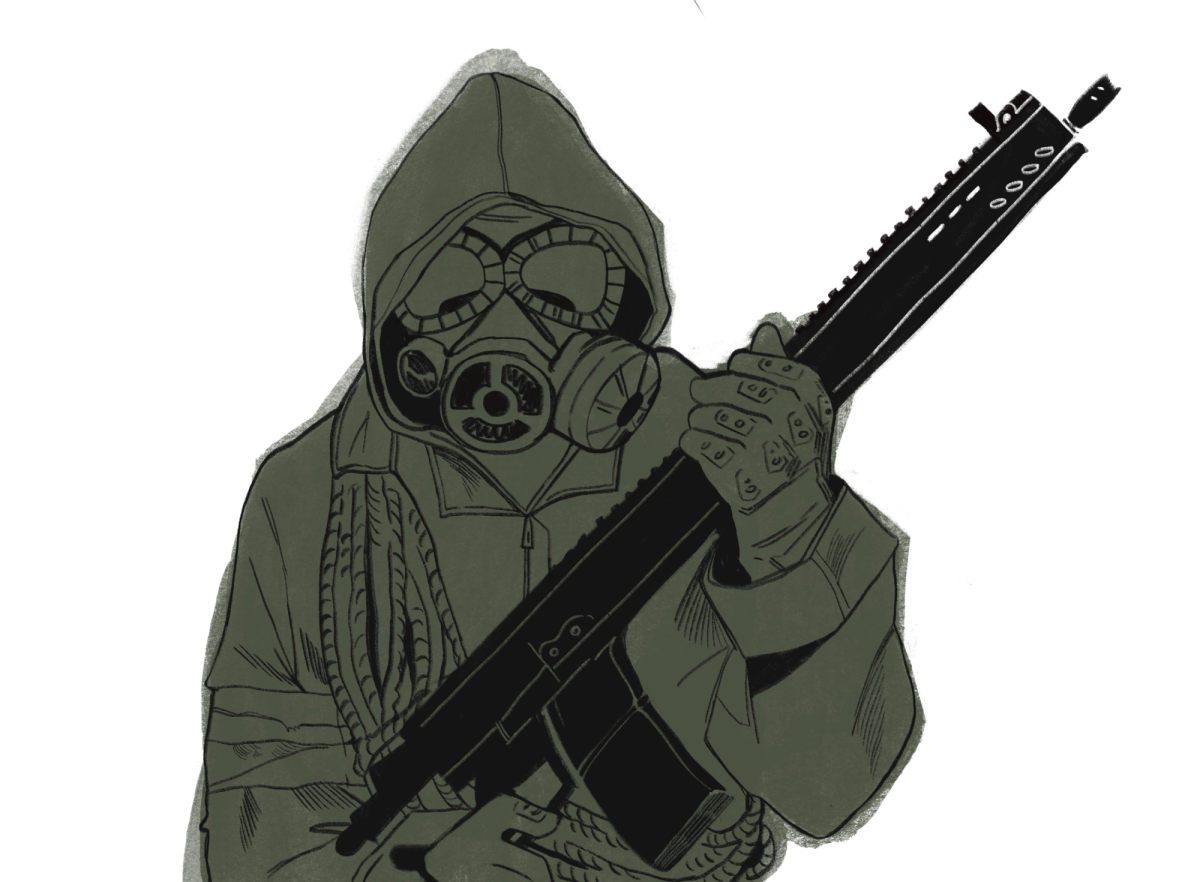
Increasing gun violence in Walla Walla creates impacts that are felt everywhere, including Whitman’s campus. In the early morning of Oct. 6, a shooting near Tau Kappa Epsilon left bullets embedded in students’ walls and multiple vehicles damaged. The Walla Walla Police Department have not yet offered updates on their investigation into the shooting.
Gun violence continues to be a defining and divisive issue in American life, with deep cultural, historical and political roots. According to Anthropology Professor Jason Pribilsky, guns have become more than a means of protection or sport; they are embedded in American identity, language and values.
Pribilsky highlights the entrenched relationship Americans have with guns and the complexity of addressing gun violence.
“You can’t go too far in the United States without seeing how prevalent guns are. It just saturates so much of our language. We talk about being triggered; we talk about [how] someone’s gunning for something like if they’re trying to get a job. Our language is really populated with all sorts of gun metaphors. Just think about video games and movies and just the way in which guns are such a huge part of our culture,” Pribilsky said.
Historically, the United States was founded on principles that intertwined guns with westward expansion and individual protection, reinforced by the Second Amendment. However, these principles have contributed to a contemporary reality where firearms are the leading cause of death among children, often used in suicide and mass shootings. Pribilsky explains that this normalization of gun presence has created a culture where personal firearm ownership is now as commonplace as having car insurance.
“Obviously, the United States is a country that was founded in blood, like the genocide of Native Americans is at the hands of guns. So then we often look at the U.S. Constitution; we look at the Second Amendment protecting the rights for people to bear arms and there’s a lot of different histories to go off of that one,” Pribilsky said.
He continued by pointing out how gun-related deaths, particularly suicides and shootings, have dramatically impacted the nation, adding that while mass shootings capture public attention, they make up a small but tragic part of gun violence. He adds that societal attitudes on gun control are reaching a critical “tipping point.”
Public health efforts, he notes, are often overshadowed by political divides, with conservatives focusing on mental health programs over restrictions and liberals pushing for assault weapon bans, though most gun violence involves handguns. He critiques this approach as “knee-jerk politics,” noting that focusing solely on assault rifles or mental health limits the potential for more nuanced solutions.
Pribilsky argues for a broader understanding of gun culture and violence, suggesting that examining other nations’ responses — such as New Zealand’s buyback program — may provide insights, though they may be challenging to apply in the U.S. due to the unique cultural attachment to guns.
Walla Walla Police Department’s Administrative Sergeant Nick Loudermilk has observed a concerning trend in gun-related crimes in the area, highlighting a rise not only in Walla Walla but regionally as well.
“There has been a noticeable increase in gun-related assaults … in the last 18 months,” Loudermilk said.
Loudermilk noted that social media might play a role in this surge.
“We’re seeing an increase in social media activity, as far as people posting pictures of themselves holding guns, where we know those people are not legally allowed to possess firearms,” Loudermilk said.
Loudermilk explained that this visibility contributes to a broader sense of gun possession in the community. To combat these trends, the department employs a proactive strategy through its Drug and Gang Task Force, which includes community education on gun safety and proper firearm storage.
He also stressed the importance of locking up firearms to prevent them from being stolen.
“The way that criminals get guns is by stealing them … most of the time they’re stolen,” Loudermilk said.
Loudermilk noted that the Department does not engage in gun buyback programs, instead focusing on accountability for known offenders through their Career Criminal Apprehension Team.
Pribilsky also highlighted the need for programs focused on community violence reduction.
“Programs that are really focused on not so much getting the guns out … but are really thinking about how to reduce violence generally in different communities have some good effect,” Pribilsky said.
Reflecting on his experience teaching a gun safety course, Pribilsky noted a significant difference between recreational shooting and the pervasive gun violence in the U.S.
“There’s a huge gulf between the gun violence in the United States and just going out and target shooting,” Pribilsky said.
Loudermilk discussed that, despite the overall rise in gun violence, there has not been a specific increase affecting schools or college-aged youth directly.
“There has not been any specific increase related to the schools or college youth,” Loudermilk said.
He, however, acknowledged the growing involvement of younger individuals in gun-related incidents on the streets.
As communities nationally grapple with escalating gun violence, it underscores the urgent need for comprehensive approaches that address public safety to prevent further loss and tragedy.











